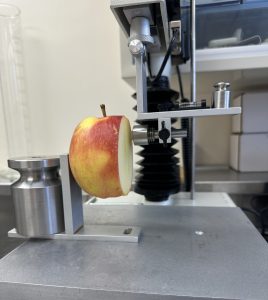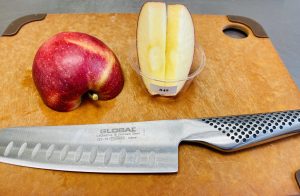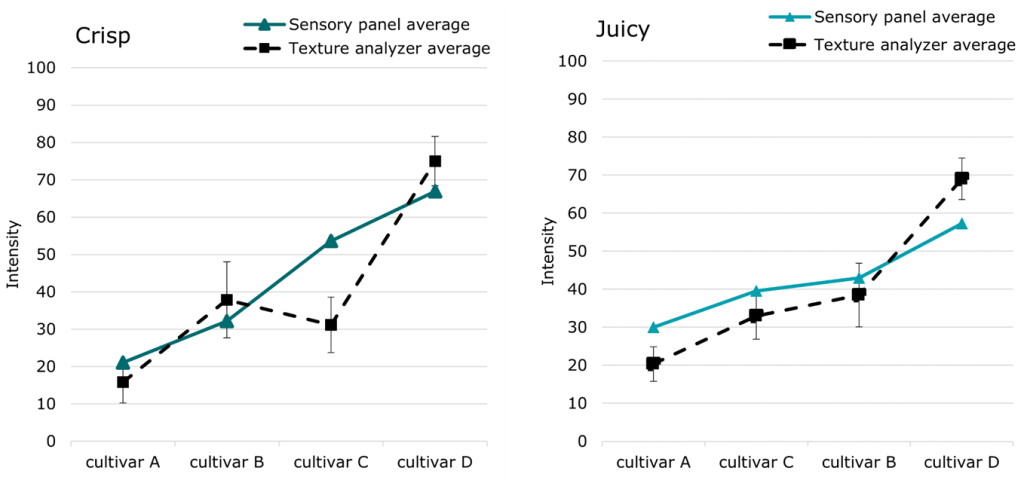Apple texture calibration
Consumer, Sensory & Market Insights researchers have been studying apple texture for many years. Texture is important to evaluate as it is the key to consumer liking. Many consumers prefer crisp and juicy apples with no mealiness.
We currently use instrumental measurements along with predictive modelling to estimate crispiness, juiciness and mealiness of new apples in our breeding program (sometimes hundreds in one year). This screening is done before apples are tasted by the sensory panel and was developed in an earlier multi-year project (2022 apple texture study).
What we did
This winter (January – February 2024), we decided to explore using these instrumental measurements for a new purpose: as a training tool for the sensory panel. Training tools, like calibration and reference standards, help us to collect robust sensory data. This is especially important for natural products like apples, which can have seasonal variations, for example, an apple’s sweetness or texture profile may change year-over-year.
The instruments

Vineland’s texture analyzer measures friction by moving up and down across the apple flesh and provides insight into textures perceived when biting and chewing an apple.
Prior to testing, apples were removed from cold storage and kept at room temperature for 24 hours, then cut and placed onto the instrument frame (Fig. 1). Ten replicates were evaluated for each apple variety to account for individual variation in fruit.
Three to four apple varieties were selected for each attribute to demonstrate low, medium and high intensity scores, ensuring standardization across the range of apple texture.

The sensory panelists
The sensory panelists rated perceived texture, intensity of crisp, juicy and mealiness in the same apples that were measured instrumentally. Apples were tasted blind in a random order, in duplicate. Samples were presented as wedges, with skin on (Fig. 2) under red lighting and identified with a 3-digit code to avoid bias.
The sensory panelists’ ratings were then compared to the texture analyzer predictions to ensure a high degree of accuracy and correlation.
What we found
The sensory panel ratings were correlated to texture analyzer measurements for crispiness, juiciness (Fig. 3) and mealiness. These results support using the texture analyzer as a tool to select reference apples to calibrate the panelists’ intensity ratings during training, thereby ensuring panel consistency in apple texture profiling from year-to-year.

Relevance
Texture is a key attribute driving liking in apples. By using a multi-prong approach of instrumental analysis paired with sensory panel evaluations we can ensure that we are selecting apples with the texture profiles desired by apple consumers.
We continue to develop tools to support the development and selection of consumer-preferred traits in our breeding and variety development programs at Vineland. Ensuring that we can account for the variability inherent in natural products like apples, provides confidence in our ability to commercialize varieties that will be accepted by growers and consumers.
Questions? Looking for more information?
Amy Bowen, PhD, Director, Consumer, Sensory & Market Insights
amy.bowen@vinelandresearch.com, 905-562-0320 x805
